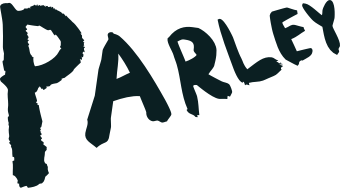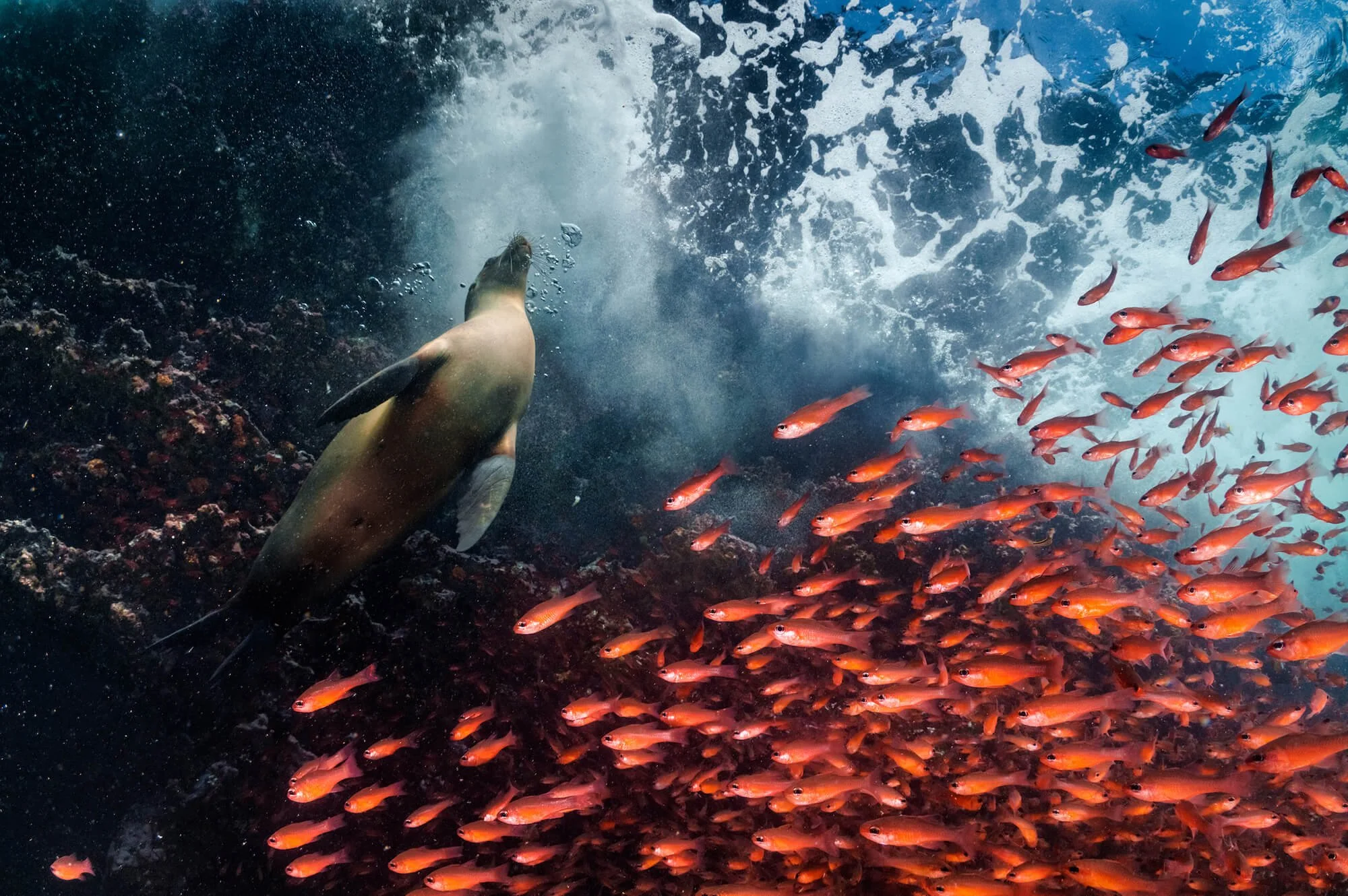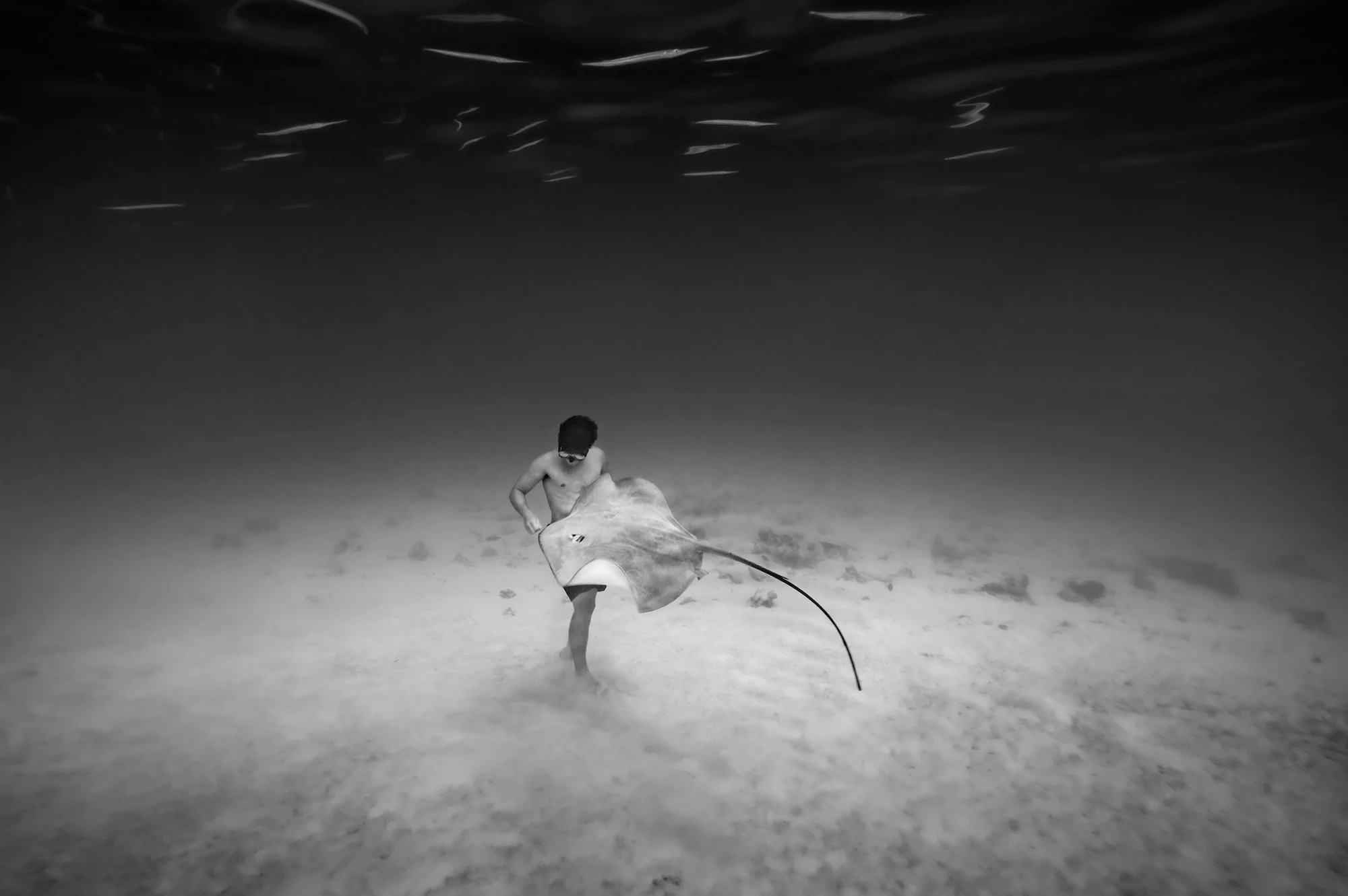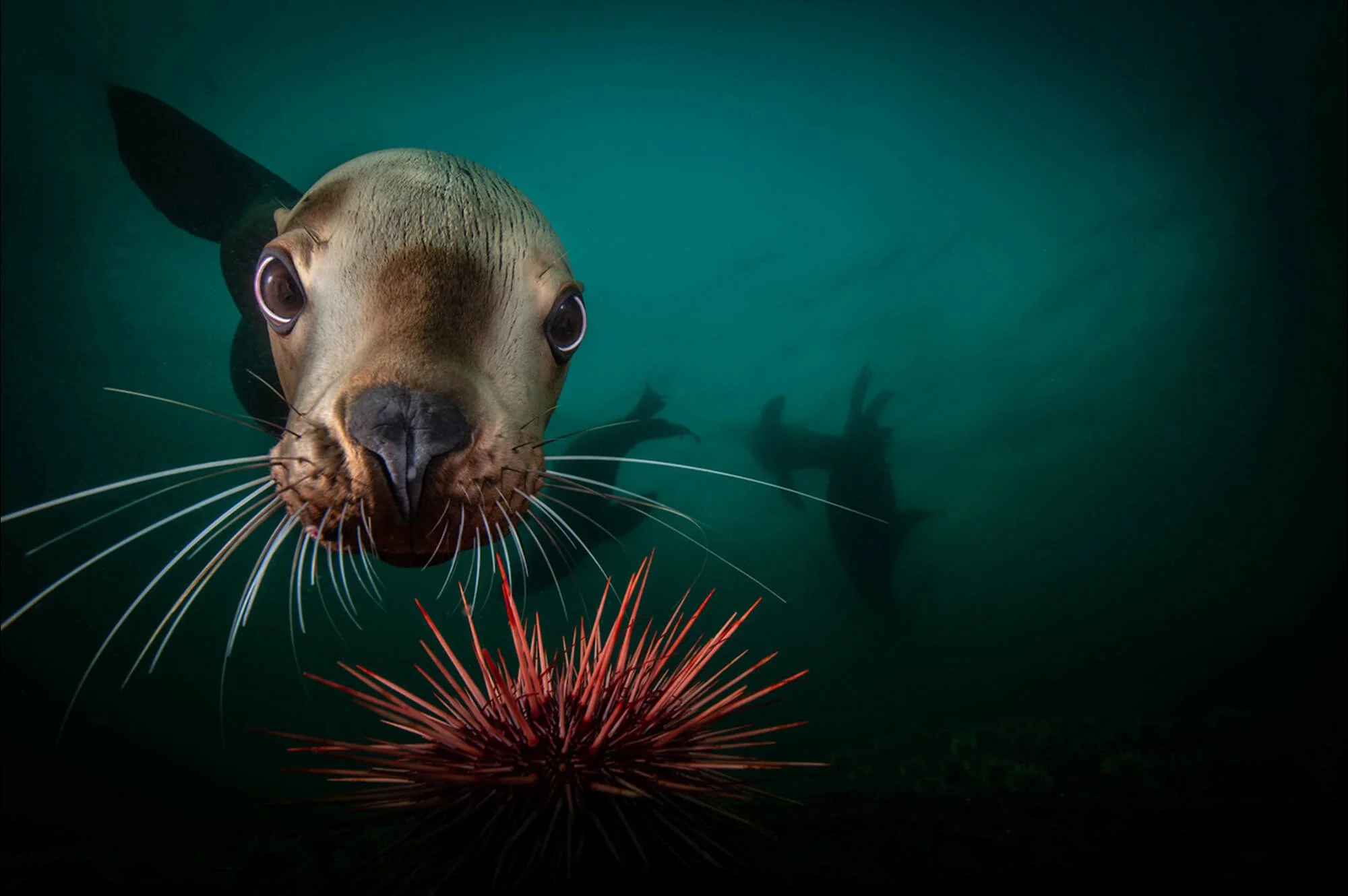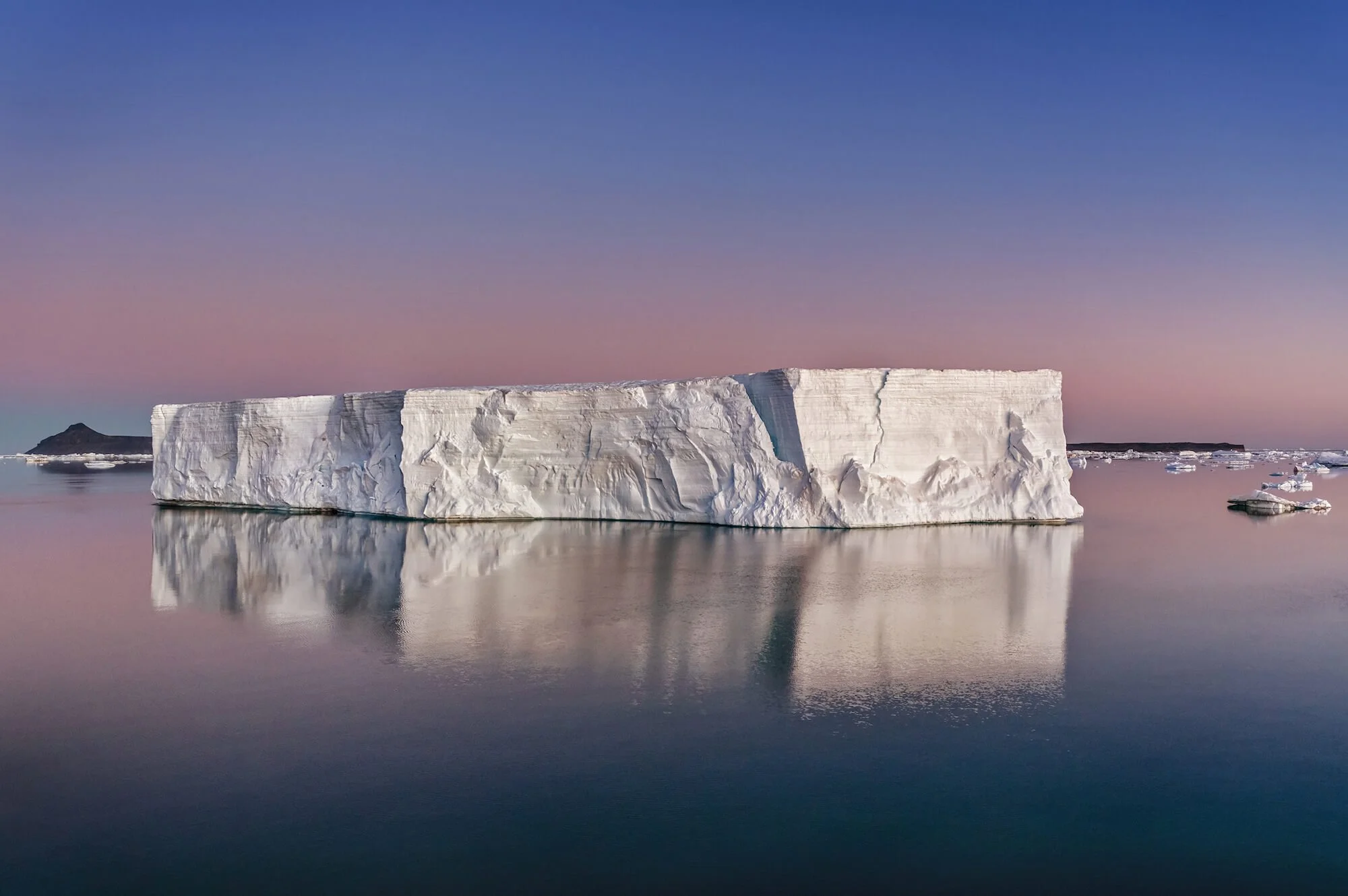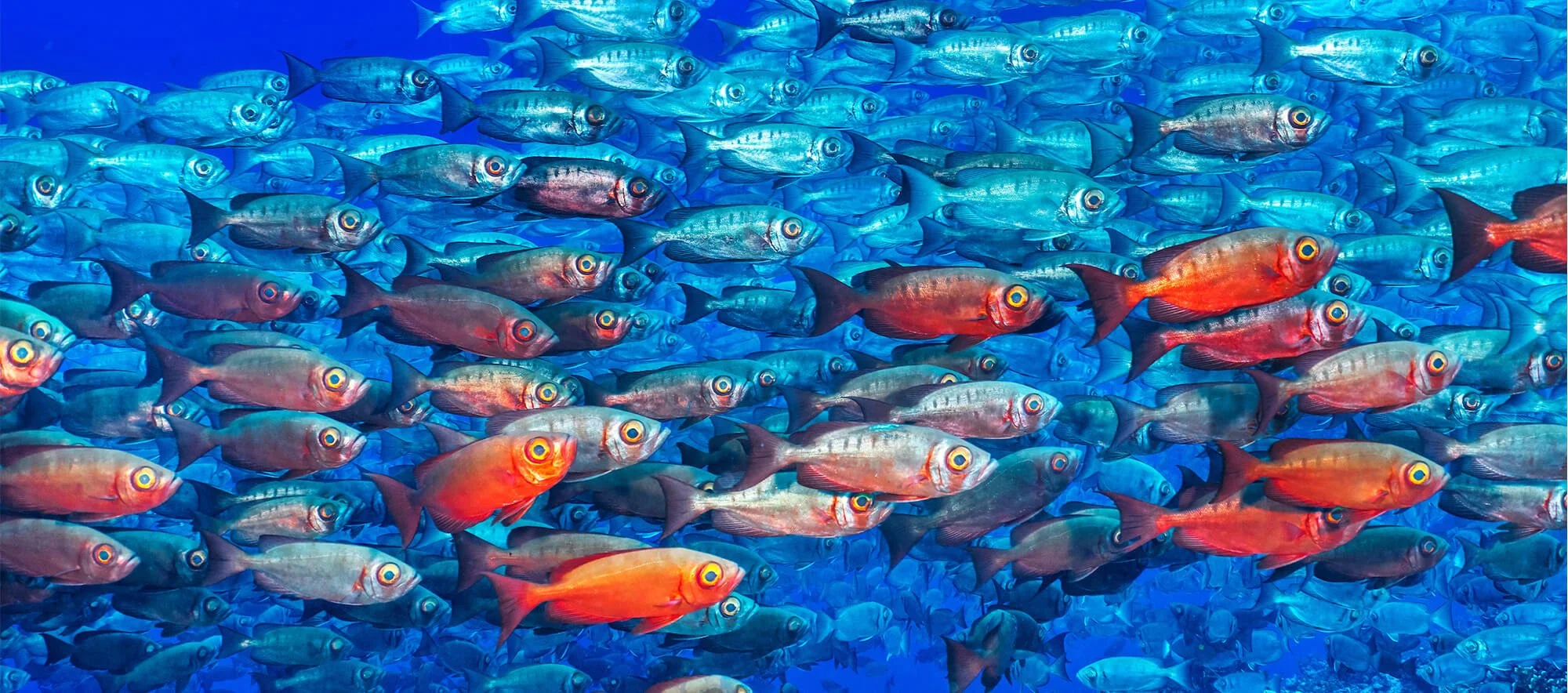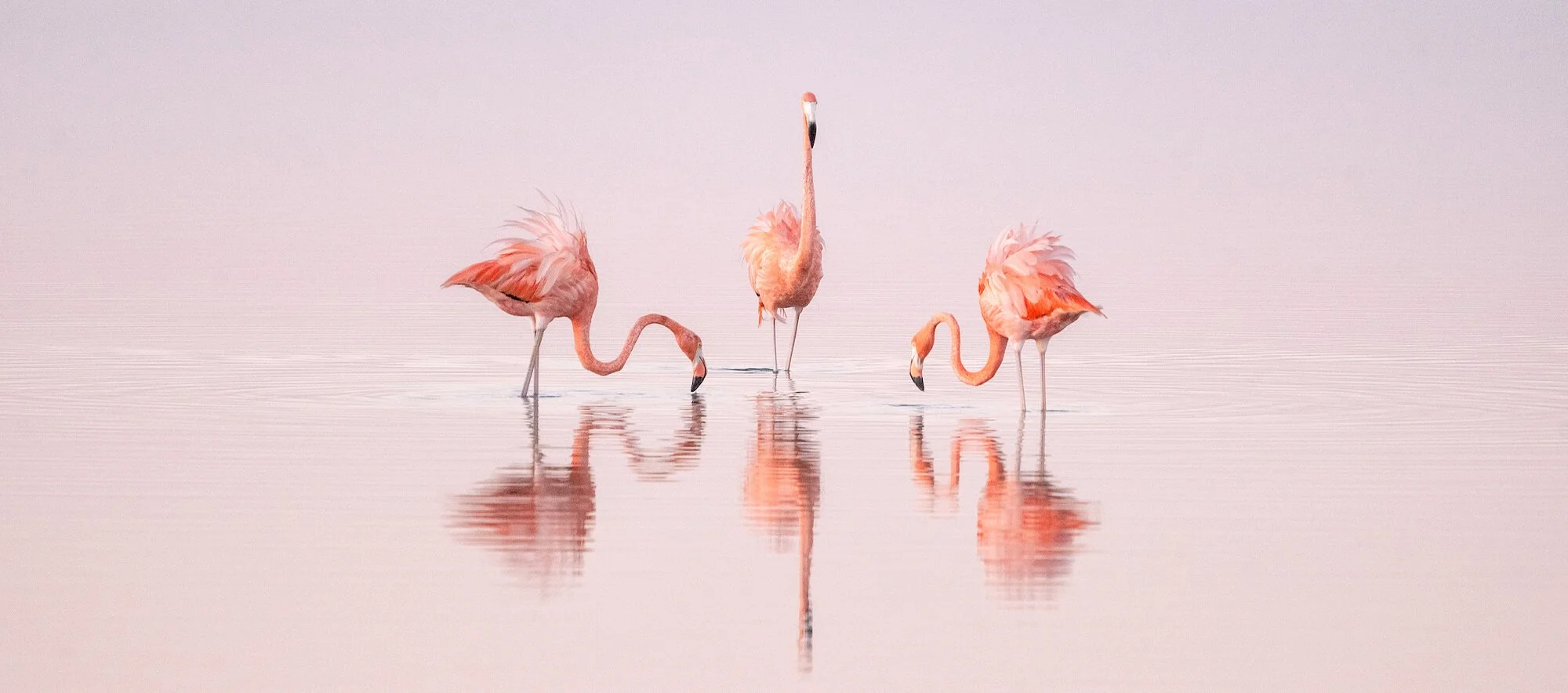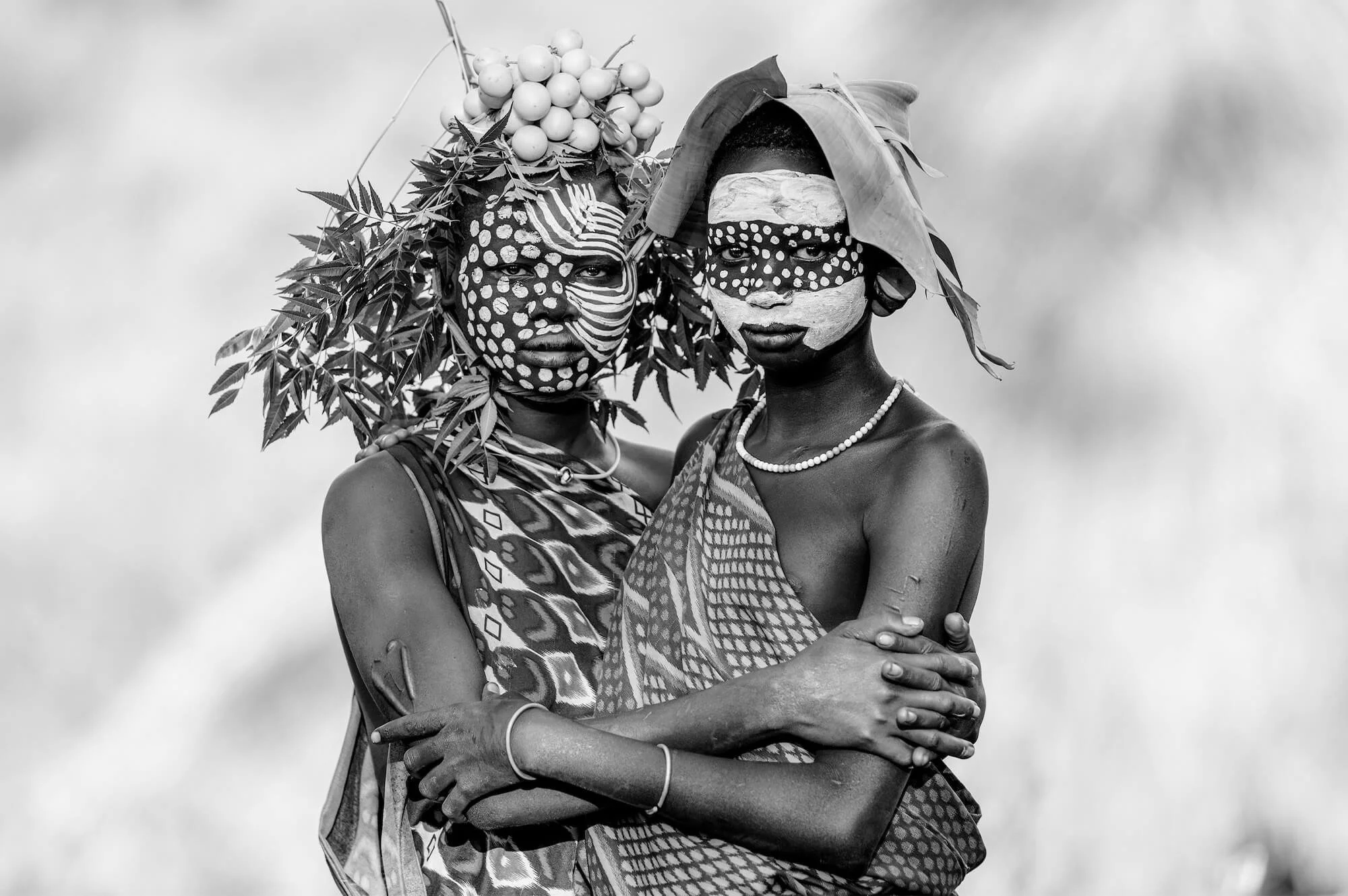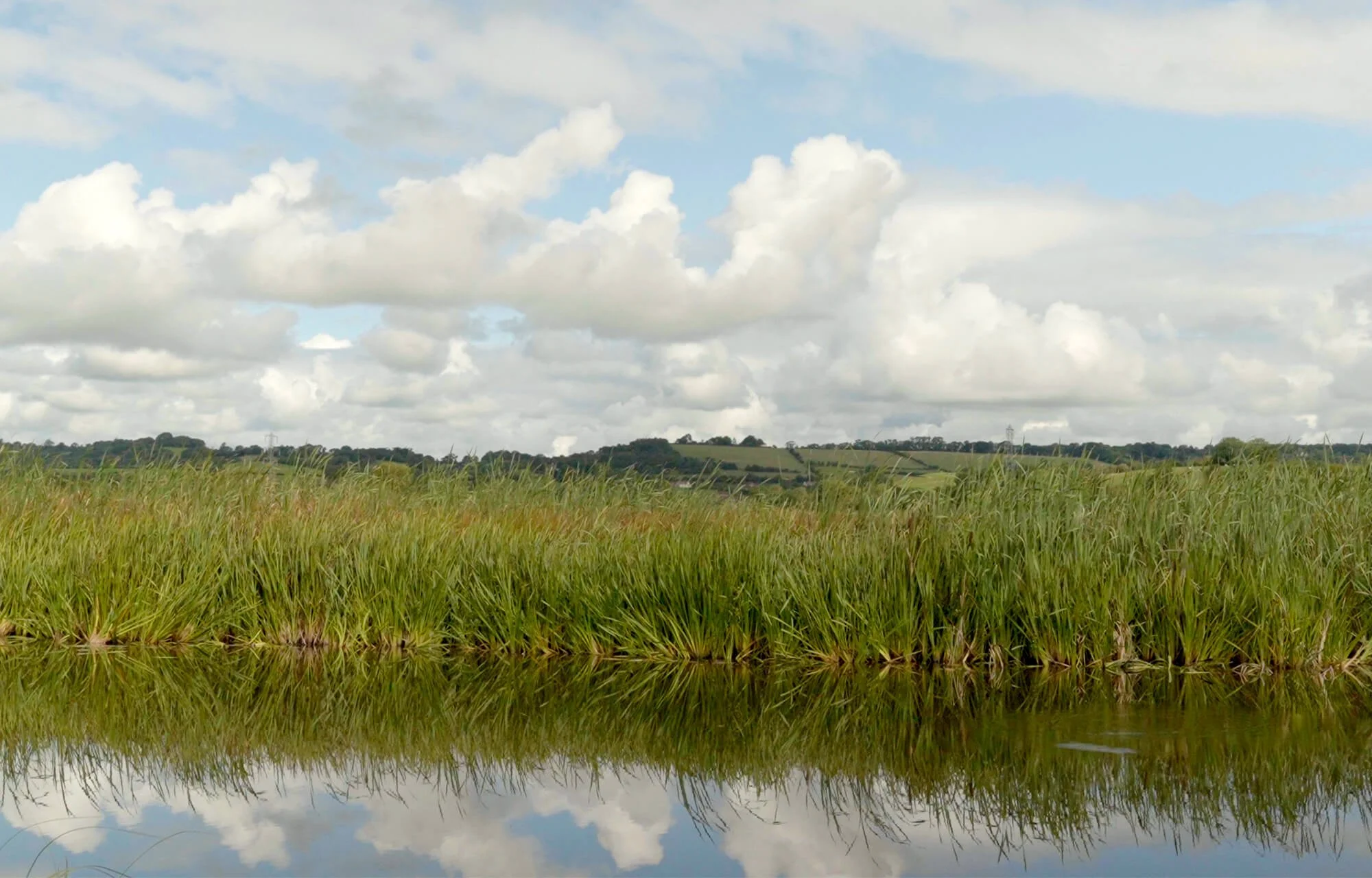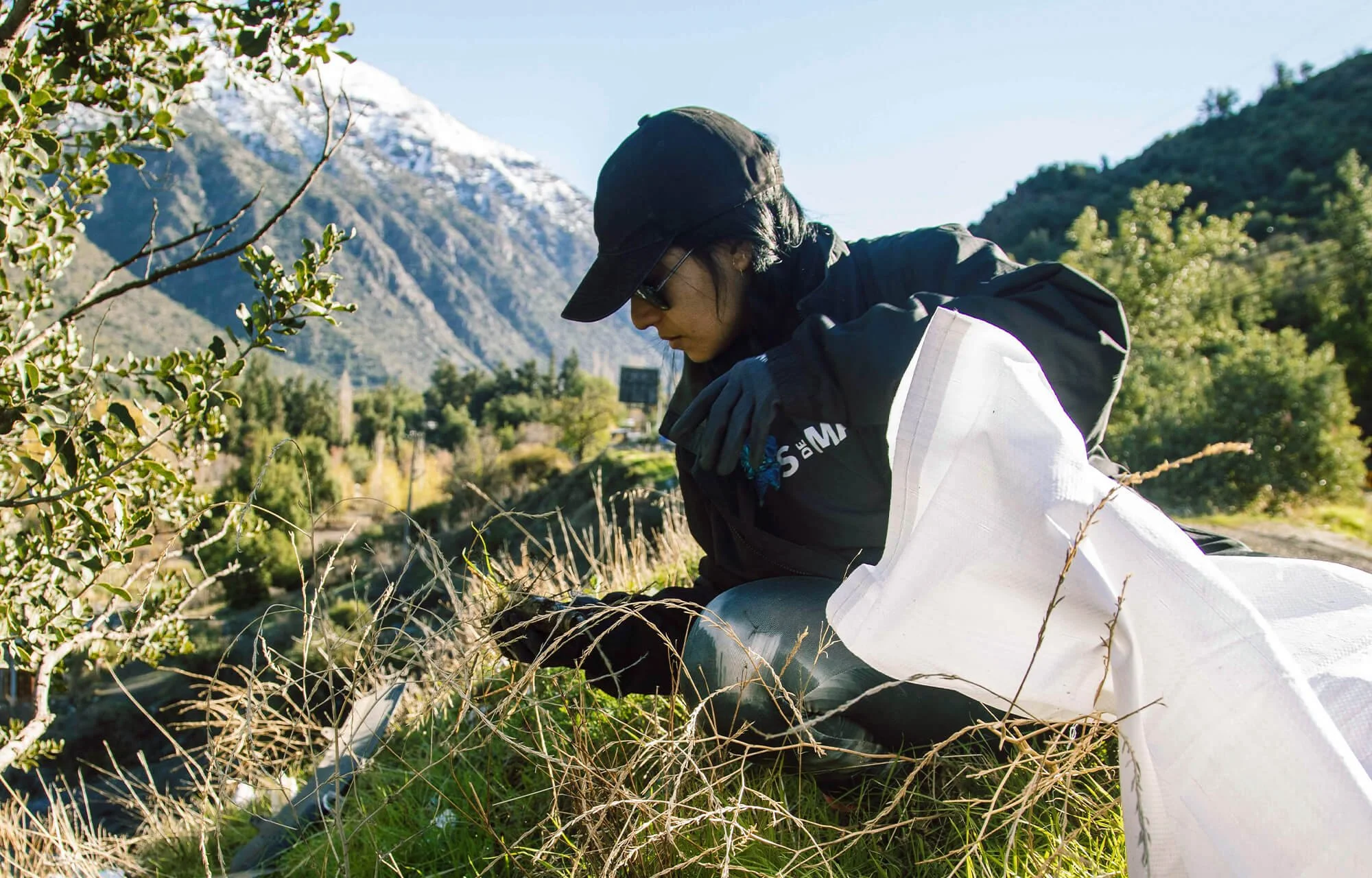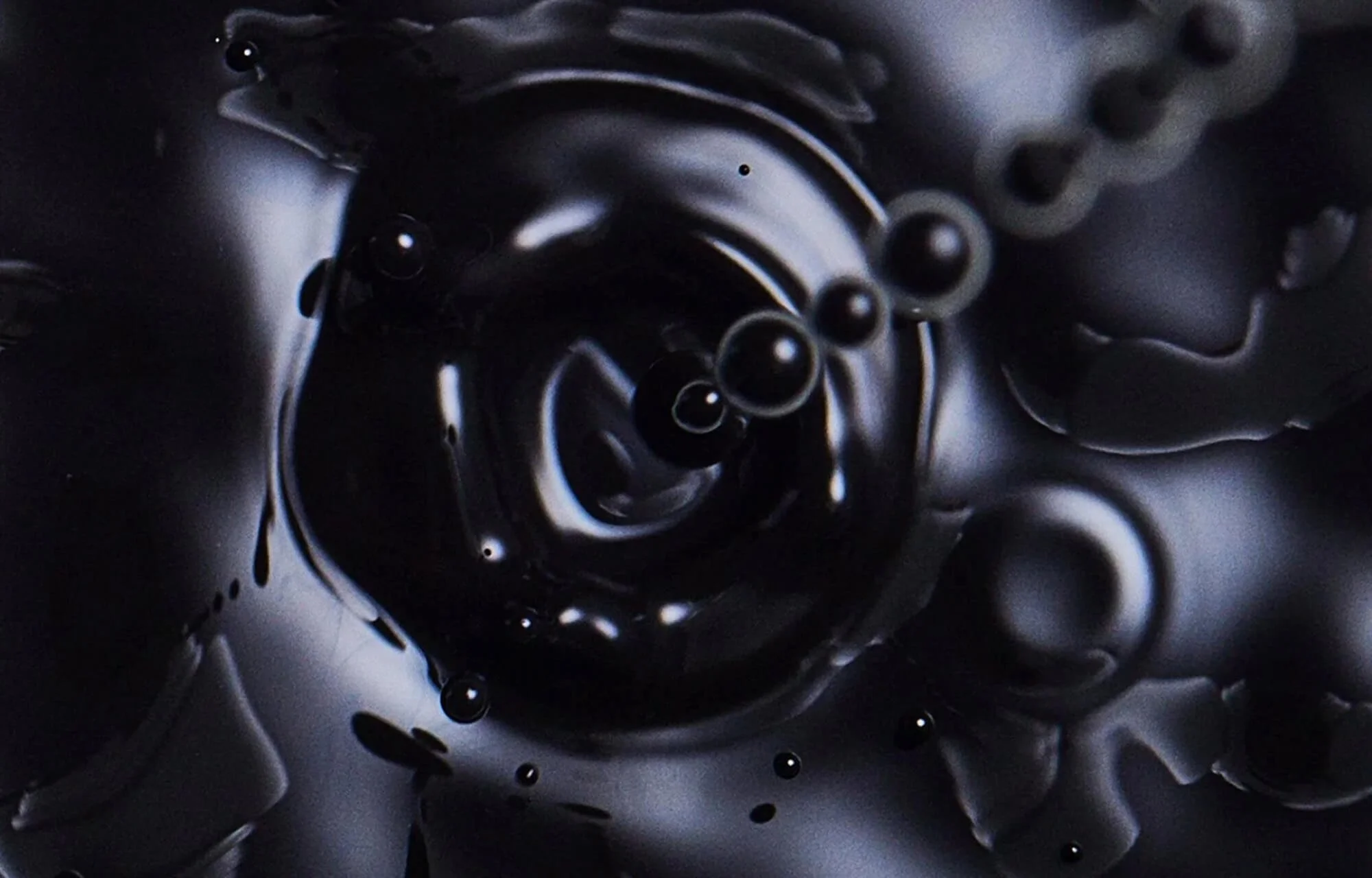In Focus: Cristina Mittermeier
We speak to one of the most important photographers of our time about her journey from “housewife” to pioneering environmentalist. Here, we get her lens on a dying planet.
Much of Cristina Mittermeier’s life’s work is inspired by something that she identified in our world as being wrong. The term “conservation photography” is one that she coined and she founded the International League of Conservation Photographers to celebrate people documenting the world as it really is while protecting it as they did so, as opposed to their lauded peers taking pictures of animals consigned to lives in captivity. A pioneer who operates in a largely male-dominated field, she hopes that she can be an inspiration to other women, a walking example of how determination and single-mindedness can result in you becoming one of the most celebrated environmental photographers of all time.
Growing up in Mexico “Mitty”, as she’s now widely known, was inspired by a supportive family and a father who returned home from work with copies of National Geographic or books by the 19th century “pirate-fiction” author Emilio Salgari. These early introductions to environmental literature piqued a curiosity that became a career, leading her to study marine sciences and then fine art, before a chance collaboration with a Mexican photographer enlightened her as to how imagery could influence and reach more people than scientific papers could.
A three-decade career has seen her work featured in renowned publications such as TIME and National Geographic, while being shared widely to millions of followers on Instagram. Her archive is a vivid documentation of our natural world – breaching humpbacks, shifting glaciers, coral reefs buzzing with life, Indigenous communities whose lives are dictated by the ancient flow of rivers. Along with her partner Paul Nicklen, she cofounded the conservation organization Sea Legacy in 2014, further cementing her firmly-held belief that imagery must coexist with impact.
She now lives on Vancouver Island with Paul and when we speak, she’s home for an unusually extended period of time, helping him as he recovers from shoulder surgery. Here, we talk to Mitty about how her life behind the lens began, how to fight for survival when it’s not just our own, and her book Hope.
Q & A
“I was a Mexican woman, a housewife, so nobody was paying attention to me and what I was doing, so nobody told me I couldn’t. I just kept going, and here I am.”
Cristina Mittermeier
I'd just like to start right at the beginning, in your early life in Mexico City and then Cuernavaca. How soon did you become fascinated by wildlife and at what age did it become a passion?
I think that every child on this planet is born with a fascination for wildlife, but it’s beaten out of us, maybe by parents or the school system. I was lucky to come from a large family of five children, so I had that back and forth with my siblings who also love animals along with my mom who also facilitated it. I've always had that fascination and it was nurtured in an unusual way – my parents encouraged me to read a lot, too. At lunchtime in Mexico parents come home, so we’d all have lunch together. My father would come home with the National Geographic or books written by Emilio Salgari, an Italian author from the 1800s. He wrote beautiful descriptions of Malaysia, Borneo and the Sundarbans in India, despite having never been to these places. That sparked a fascination with adventure, animals and Indigenous people. Children are curious like that and of course their fate is that they will find incredible jobs that pay them nothing. That is the curse of this fascination! It's a shame because the biologists of the world should be the pilots of the spaceship instead of politicians and billionaires who have no idea how the machine works.
You studied biochemical engineering in marine sciences, but then you went on to attend a fine art photography program in Washington. I'm curious, at what point did photography become a central part of your life, something that you really knew you wanted to pursue, and what sparked that?
I was discouraged from becoming a marine biologist by my dad who was very practical and very left brained. He was an accountant and he really wanted us to have a career that would be a nine to five and pay the bills. I had a sensible dad and a very passionate mother, she championed me and said: ‘go and do whatever you want to do’. So we compromised – my dad said that if I went to his alma mater then he would support that. Biochemical engineering was what was available but I call it marine sciences because I’m embarrassed to say that I studied fisheries biology. I went to university to understand how to do mass slaughter of wildlife in the ocean and it didn't take long for me to realize that that's exactly what we were studying.
By the time I graduated, I knew that I wanted nothing to do with aquaculture or industrial fishing. I went to work in conservation and as a young woman growing up in a place like Mexico I wanted to gain some credibility and respect. I thought that science would be the way to get me in the door, so I started writing scientific articles and I was very lucky that my first husband, Russell Mittermeier, is a very well-renowned, experienced conservationist, and he mentored me. I was able to co-author scientific papers that are still influential to this day. We were looking at where we can have the most bang for our buck for every dollar invested in conservation, so we wrote the theory of the hotspots, which talks about endemism and biodiversity laws. I was doing that and realizing that nobody reads those scientific papers, which is kind of frustrating. However, I was sharing an office space with a photographer in Mexico City who didn't speak English. He asked me for help and was interested in this hotspots theory. So, he did a beautiful coffee table book about the hotspots and I helped him with all the text, the relationship with the scientists and the photo captions. When the book came out we had a big event and people came in their fancy dresses to the launch of the book. I realized that people were not looking at the science, they were looking at the photographs. There were questions about the photographs, people were curious about where the photograph was taken, about whether the photographers were scared or hungry – the more human questions. Science can be such a barrier of entry to the conversation about how to save our planet, because people just don’t have the context for it. I thought ‘wow, this is a much better way of reaching people with an urgent message’. I didn’t know how difficult photography was but I think there’s something to be said about entering a field and thinking in your mind that it’s achievable because until somebody tells you that it’s not, you believe that it is. I was a Mexican woman, a housewife, so nobody was paying attention to me and what I was doing, so nobody told me I couldn’t. I just kept going, and here I am.
You set up the International League of Conservation Photographers. Could you tell me more about the motivations behind that and more about the collective's mission?
I already had a couple of children and I was dabbling in photography. I was not a wildlife photographer at this point because it's difficult to disappear and go and shoot when you have small children at home. But my ex-husband was an anthropologist, so I would travel with him to these remote villages, and that's how I started taking pictures of Indigenous people. At the time in conservation, we started to realize that conservation doesn't happen in isolation. You don't just put a boundary around an area and call it protected – it demands the allyship of the people that live there who have been the guardians of this biodiversity for millennia. I thought, ‘well, conservation is not just about animals, it's also about people, and nobody's photographing that angle’. So I saw an avenue for my photography there, and that's how it started. I was a housewife trying to enter a field that's very male-dominated. This is not a complaint, I'm not whining, but it is a lot of white men. I hope that other women can look at me and say, ‘wow, this can be done’. What I say to them is, ‘absolutely it can’. You have to take it very seriously because we are competing in a very competitive field. It's not enough to be a pretty girl, you have to be a damn good photographer.
The International League of Conservation Photographers came about because photography felt like climbing Mount Everest – you have to go to base camp first and then you have all these summits that you need to conquer. I was attending the conferences and I could hear what the photographers were talking about, and it had nothing to do with saving the places where they photographed, but everything to do with the equipment. They even talked about game farms! How to rig the system to take better photographs by going to these places where animals are being abducted from the wild and kept in cages for the benefit of photographers. I just thought it was so wrong. But the market was there for very polished photographs of a puma jumping from one rock to another, an almost impossible shot to get in the wild. Stripped of context, somebody looking at it might think ‘wow’. In these conferences there was a small group of photographers that were doing extraordinary things for conservation, but everyone was equalized under the term “nature photographer”. So you had a man photographing flowers in his backyard and in the same conference a photographer like Nick Nichols walking 2000 kilometres to create 13 national parks. I thought there was such a huge difference in intention and that was the spark. I wanted to brand this type of active photography in a different way, to elevate it and build a legend around it, to find and celebrate the photographers that are fucking heroes. So I created the organization, I filed for the 501(c)(3), I raised the money to run it, I built the bylaws. I created the whole thing.
“The biologists of the world should be the pilots of the spaceship instead of politicians and billionaires who have no idea how the machine works.”
Cristina Mittermeier
You've been photographing our world for a long time now – how have you seen it change?
I think a lot of us feel the necessity to gloss over what's happening. I will say unequivocally that our planet is dying, that we can see how our oceans are dying. I'm not saying this metaphorically. We have massive algae blooms, hundreds, thousands of whales died this year alone. And as a nature photographer it is becoming increasingly difficult to find those amazing nature experiences. I was just in Raja Ampat, the Indonesian archipelago. It's supposed to be one of the highlights of the diving world, and it is a shit show. The reef bleached in the time that I was there. We arrived in October and from then until March, we watched the reef go white. It's drowning in trash, and there's 200 boats putting divers on the same dive sites over and over again. This is the highlight of the diving world and it is horrible. It's changed in ways that are very painful for those of us who care. It's difficult to watch and to know that we have already condemned our children who love nature to a planet without coral reefs. There's nothing we can do at this point to revert it. I don't care what people say, the temperature's not going to go down and the massive ecosystem that we knew was the Great Barrier Reef is going to be gone in 20 years. It's crazy. But warriors don’t just sit down. We're going to be brave hearted, put our blue paint on and keep going.
You just mentioned diving. How often do you go out photographing the ocean and what kind of preparations do you need to make for shooting underwater?
I'm very lucky that I'm married to an incredible marine biologist and underwater photographer (Paul Nicklen). When I first met Paul, I had never held an underwater camera before so he loaned me equipment and mentored me on how to use it. We complement each other really well because I brought conservation background to our relationship, and Paul has incredible expedition prowess for underwater photography that he got at National Geographic over a 20 year career. When we launched Sea Legacy, we were trying to bring the ethos of the International League of Conservation photographers to the ocean in a very focused way. The ocean is such a difficult place to document and very few people have the skillset to do it. Paul and I worked on several assignments for National Geographic, so we were given money that allowed us to charter a boat, get a captain, and just facilitate being out there. When you are a nonprofit and you have to charter a boat, it becomes really difficult and very expensive. So we knew that to eliminate that from the budget sheet, the best thing we could do was to buy a boat, which is why we personally bought Sea Legacy One. Paul has an incredible ability to put us in the right expedition location, he's a superb leader. Where we are going to dive and how we are going to dive is really important because a lot of people think that diving is showing up and doing a couple of dives and then you move on. But to do the work that we do, you have to stay and you have to do the same dive 20 times. It takes time.
How does yours and Paul’s creative relationship work? Your work is your life – are you showing each other photographs, editing each other’s work?
It’s very supportive. I'm very happy when he takes a beautiful photograph, sells it, and I can see it on somebody's wall. I think he's very proud of me too. At the same time, it’s very competitive. We shoot next to each other using professional equipment, and we often come back with very similar work. However, I think over long professional careers, we have both developed a unique look to our work. It could be the same setting, the same animal, but the result is different. It's good for your own internal competition, too. People are naturally competitive, as well as being able to love and be proud of other people. We're actually thinking about making a book called Shoulder to Shoulder!
Do you think that the emergence of AI makes real photography even more important? To document the world as it really is?
AI has been with us for such a short time. When it first emerged and the realization that these massive companies have been using that work without us knowing, it was shocking. Paul and I are part of a group that launched an app where you can turn the data tap off and you can opt for your work not to be used by robots to train their machines. AI can be helpful, but it's a tool, nothing more than that.
Do you think that photography can or does change the world?
Yes. The proof is in the photographs that have already changed the world. When we think about Vietnam and napalm, the same photograph pops up into our collective consciousness. I was just having a glass of wine with David Burnett, who was one of the photographers who was there that day. He didn't capture it. He said ‘I was such a rookie and I was changing my film when it happened and the photograph was created’. As photographers we strive to find those iconic moments that become embedded in the collective consciousness of humanity. The thing that photography does that video doesn't is force you to stop and look at something that is then somehow internalized and becomes part of your memory.
“The solutions are many, they're out there, they're not easy and they're not cheap. They may not happen in our lifetimes. But do we get to sit it out? Of course not.”
Cristina Mittermeier
I also want to talk about your book Hope. Could you tell me about the process of putting that together and also what the word ‘hope’ in the context of your work means to you?
Hope came about when I was sitting right here on a very gloomy day, thinking about how close some of us are to the reality (of climate change) and how painful and difficult it is. Some days it just doesn't feel like it's worth it to get up and keep trying when you are facing the apathy of the world. And I thought to myself, ‘I don't get to do that. I don't get to just give up and sit here depressed and gloomy. How can I pick myself up?’ I thought that the antidote to this thing that I'm feeling is to feel hopeful, and it's not something that I'm naturally feeling because there's very few reasons to feel hopeful. So I have to be deliberate and intentional in finding hope. It's not going to be just something that happens, it's going to be part of my strategy to survive and win.
I immediately thought about the people that I work with around the world who are doing heroic things with very few resources and without the attention of the world. When you’re someone who lives on an island in Indonesia, picking up trash every day with nobody celebrating or funding you – but you still do it. I find hope in that because there's millions of us doing everything we can every day, so I wanted to capture that. It’s a personal life raft of survival where I can hold onto this moment of hope and know that we're like a giant chorus singing around the world. Every once in a while we need to catch our breath, look at the horrors in the eye and then we can join the chorus again when we feel like we have recovered from whatever it is. It's a difficult time we're living in and we're about to see even more horrific things.
What advice would you give to a teenager looking to break into the world of conservation photography?
To keep going. The forces that are going to tell you that it's not possible, that the time has passed, that it's impossible to make a living, are massive. The Japanese concept of ikigai, which means finding the purpose of your work, was huge for me. The confluence of the things that you're good at, which are also the things that you love, the things that get you paid. And let’s not confuse getting paid with being a billionaire. Getting paid means making a life and making a living. I wanted to be a wildlife photographer and at the time I couldn't. When I became a photographer the way that I supported my work was by shooting weddings, portraits and high school graduations. Nothing is beneath you. Put your camera to work.
We talked earlier about losing the Great Barrier Reef within 20 years – what can be done to apply the necessary pressure to save our planet?
The worst thing we can do is disengage and say, ‘oh nothing can be done. It's too late’. Let's engage, let's be Braveheart, let's put our superhero suit on. And when we say the fossil fuel industry needs to end, we're not saying all of it and forever. We all need to become activists, we all need to become educated, and nobody's going to do it for us. If you really want to feel better about the world, you have to engage and become part of a very large community of passionate people that are doing everything they can, because that's the only choice we have. The solutions are many, they're out there, they're not easy and they're not cheap. They may not happen in our lifetimes. But do we get to sit it out? Of course not.
